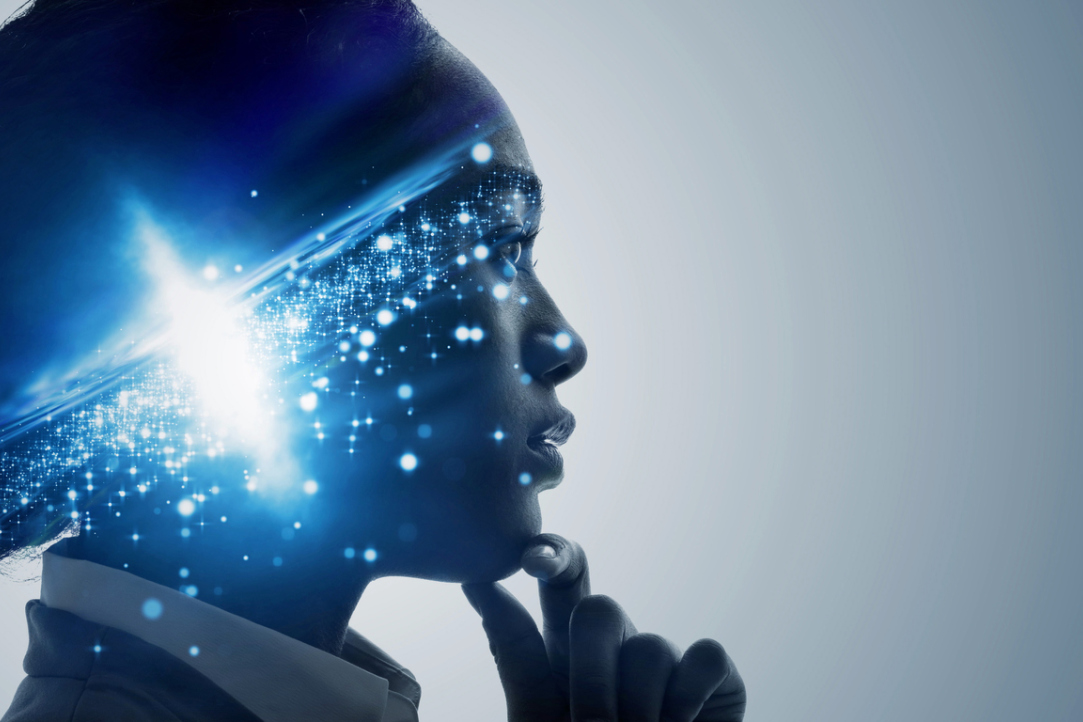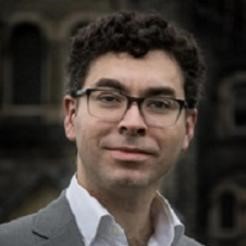Cutting Edge Neuroscience Research to Be Discussed during Online Conference at HSE University

The first International Conference on Social Neurology in Environmentally Sound Conditions, organized by the International Laboratory of Social Neurobiology of the Institute of Cognitive Neuroscience and Aalto University will be held online on June 21-23, 2021. The HSE News Service spoke with conference organisers and some of the key speakers in the run-up to the conference about its agenda and some research highlights.
Rapid methodological advances are increasingly making it possible to conduct social neuroscience studies in ecologically valid conditions. These novel approaches span from neuroimaging studies with naturalistic stimuli such as movies to the use of wearable sensors in real life social interactions. Topics in this new area of research span from investigation of the neural basis of social cognition, unravelling the effects of cultural influences, to investigation of the biological basis of intergroup biases.
Leading Russian and foreign scientists will take part in the conference: Gal Raz, Iiro Jaaskelainen, Enrico Glerean, Ale Smidts, Emily Falk, Jonathan Levy, Yaara Yeshurun, Shinobu Kitayama, Igor Grossman, Svetlana Kirdina-Chandler, Vasily Klyucharev, Anna Shestakova, Yury Alexandrov and others.
The First Milestone
Anna Shestakova, Director of the Centre for Cognition & Decision Making, anticipates a warm atmosphere, vibrant talks and fruitful discussions with outstanding researchers in the frontiers of social neuroscience and decision making.
This is the first significant event of the Laboratory for Social Neurobiology co-headed by Professors Iiro Jaaskelainen from Aalto University and Vasily Klucharev from HSE University.
In 2019, Professor Iiro Jaaskelainen was awarded with most prestigious Russian research grant (so-called ‘megagrant’) and introduced a new line of the brain research using naturalistic stimuli such as movies in ecologically valid conditions.

Anna Shestakova, Director of the Centre for Cognition & Decision Making
Together with the colleagues from Aalto University we have gained expertise in multimodal dynamic neuroimaging using intersubject-correlation analysis which allows to address a broad range of topics in social neuroscience, including social influence, cross-cultrural differences and many others.
International Scope: Presentation Highlights

Yaara Yeshurun
Yaara Yeshurun, from the School of Psychological Sciences and Sagol School of Neuroscience, Tel-Aviv University, does research on social neuroscience “in the wild”. She is interested in studying the neural mechanisms underlying individual differences in the way individuals interpret external situations and the role of brain-to-brain synchronization in real-life interactions.
Yaara Yeshurun is going to present her ongoing work on political-views dependent differences in neural synchronization, while processing naturalistic stimuli.
In my lab we are measuring behavioral, physiological and neural synchronization while individuals interact with each other. One of our main goals is to understand the role of synchronization in social interactions. We have a couple of projects demonstrating the relationship between behavioral synchronization and interaction quality.

Hang-Yee Chan
Hang-Yee Chan, from University of Pennsylvania, USA; University of Amsterdam, Netherlands, will speak about the neural signature of advertisement liking and present some insights into the psychological processes of consumer valuation and their temporal dynamics.
How and when does consumer valuation take place during immersive experiences, such as watching video ads? Real-time measurement of brain responses could shed light on both the psychological processes involved and the temporal dynamics as the experience unfolds.
In our study we found that liking-related brain signals emerged as early as 3-5 seconds from video onset. Based on neuroscientific evidence, this study underlines the importance of having engaging narratives in the first few lead-in seconds of video advertisements.

Shinobu Kitayama
Shinobu Kitayama, University of Michigan, USA, is interested in the triadic function of social norms and the implications for culture, social relations, and wellbeing.
The study of social norms has been the mainstay of social psychology from the inception of the discipline, focusing primarily on social influence. However, social norms have multiple vital functions. Shinobu Kitayama proposes a triadic function of social norms.
Specifically, through the past 50,000-year history of cultural evolution, social norms evolved to coordinate people's behaviors within increasingly large ingroups and cope with various natural and human-made threats (e.g., famine, pandemic, wars). Further, this group coordination function of social norms is held in place since the norms function to regulate social relations while offering psychological security to the group members.
I will discuss a series of behavioral and neuroscience investigations that have addressed each of the three functions. I will conclude that, in combination, these three functions undergird the pivotal roles of social norms in cultural evolution, social institutions, and individual wellbeing.

Igor Grossmann
The presentation of Igor Grossmann, (University of Waterloo, Canada) is entitled ‘Sound judgment: Folk beliefs and empirical evidence’.
In my talk, I will bring up a pervasive belief across cultures that better judgment depends on consulting one’s thoughts and feelings rather than asking close others or wisdom of the crowds.
From indigenous groups in Peru to post-industrial Global North, people prefer individualized deliberation strategies and rate them as wiser than transactive deliberation strategies involving others.
However, according to the empirical insights from experimental philosophy, social psychology, and forecasting research, less individualized and more transactive strategies provide greater foresight and wisdom in managing life’s challenges. It appears that judgmental preferences contradict the collective empirical wisdom about strategies that in fact promote sound judgment.

Luke J. Chang
Luke J. Chang, Dartmouth College, USA, will talk about computational social and affective neuroscience.
Emotions reflect coordinated, multi-system responses to events and situations relevant to survival and well-being. These responses emerge from appraisals of personal meaning that reference one’s goals, memories, internal body states, and beliefs about the world.
Dysregulation of emotions is central to many brain and body-related disorders, making it of paramount importance to understand the neurobiological mechanisms that govern emotional experiences. Unfortunately, the field of emotion has struggled to reliably elicit and measure affective experiences, which has limited theoretical developments.
One of the main focuses of our laboratory is to use a computational cognitive neuroscience framework to develop models of affective experiences. In my talk at the conference, I will present examples of how we can combine naturalistic elicitation of feelings with pattern-based neuroimaging analyses to develop brain-based models of affect.
These models appear to generalize across individuals and can aid in revealing the temporal dynamics of individual affective experiences. We hope that this interdisciplinary work will aid in facilitating a more cumulative and extensible science of emotion.

Enrico Glerean
Enrico Glerean, Research Fellow at the HSE University’s International Laboratory of Social Neurobiology, will discuss "naturalistic imaging" i.e. the use of naturalistic stimuli (such as films, narratives, music, etc) in human brain imaging and tell about my journey with naturalistic stimuli and fMRI which culminated last year in an special issue for the peer reviewed journal NeuroImage.
After 10 years of using naturalistic stimuli in neuroscience, I think the field is quite mature and ready for using these types of complex paradigms. But still many challenges need to be addressed: novel and even basic work is still needed for increasing validity and generalisability of the results that we have found. Naturalistic datasets come with the challenge of being quite large, so I will propose that only with a more global large-scale effort we can move the field forward.
In general neuroscience with naturalistic paradigms tries to answer questions related to basic neuroscience research, however the insights it provides can be related to current topics such as ingroup/outgroup, politics, and other social issues which are important for science as well as society.
I will present the work we have done for curating the special issue for the NeuroImage journal and future ideas and challenges that need to be solved in the next few years. I am still involved in many neuroscience studies, but what I am really trying to solve is the opening of brain imaging data for fostering replication of neuroscience results as well as sustainability of research with re-use of the same data for novel research questions.
Yury Alexandrov
Chief Research Fellow, International Laboratory of Social Neurobiology
Vasily Klucharev
Director, Institute of Cognitive Neuroscience
Anna Shestakova
Director, Centre for Cognition & Decision Making
See also:
Scientists Uncover Why Consumers Are Reluctant to Pay for Sugar-Free Products
Researchers at the HSE Institute for Cognitive Neuroscience have investigated how 'sugar-free' labelling affects consumers’ willingness to pay for such products. It was found that the label has little impact on the products’ appeal due to a trade-off between sweetness and healthiness: on the one hand, the label can deter consumers by implying an inferior taste, while on the other, it signals potential health benefits. The study findings have been published in Frontiers in Nutrition.
Internal Clock: How Heart Rate and Emotions Shape Our Perception of Time
Our perception of time depends on heart rate—this is the conclusion reached by neuroscientists at HSE University. In their experiment, volunteers watched short videos designed to evoke specific emotions and estimated each video's duration, while researchers recorded their heart activity using ECG. The study found that the slower a participant's heart rate, the shorter they perceived the video to be—especially when watching unpleasant content. The study has been published in Frontiers in Psychology.
Early-Career Researchers Discuss Cooperation between Russia and Arab States
HSE University has hosted a conference entitled ‘Russia—The Arab World: Digital Future and Youth Cooperation,’ organised by the Faculty of World Economy and International Affairs (WEIA). The meeting took place in the run-up to the first Russian–Arab summit, due to be held in Moscow on October 15, 2025.
Scientists Develop New Method to Detect Motor Disorders Using 3D Objects
Researchers at HSE University have developed a new methodological approach to studying motor planning and execution. By using 3D-printed objects and an infrared tracking system, they demonstrated that the brain initiates the planning process even before movement begins. This approach may eventually aid in the assessment and treatment of patients with neurodegenerative diseases such as Parkinson’s. The paper has been published in Frontiers in Human Neuroscience.
HSE Scientists Test New Method to Investigate Mechanisms of New Word Acquisition
Researchers at the HSE Centre for Language and Brain were among the first to use transcranial alternating current stimulation to investigate whether it can influence the acquisition of new words. Although the authors of the experiment have not yet found a link between brain stimulation and word acquisition, they believe that adjusting the stimulation parameters may yield different results in the future. The study has been published in Language, Cognition and Neuroscience.
'Our Goal Is Not to Determine Which Version Is Correct but to Explore the Variability'
The International Linguistic Convergence Laboratory at the HSE Faculty of Humanities studies the processes of convergence among languages spoken in regions with mixed, multiethnic populations. Research conducted by linguists at HSE University contributes to understanding the history of language development and explores how languages are perceived and used in multilingual environments. George Moroz, head of the laboratory, shares more details in an interview with the HSE News Service.
When Thoughts Become Movement: How Brain–Computer Interfaces Are Transforming Medicine and Daily Life
At the dawn of the 21st century, humans are increasingly becoming not just observers, but active participants in the technological revolution. Among the breakthroughs with the potential to change the lives of millions, brain–computer interfaces (BCIs)—systems that connect the brain to external devices—hold a special place. These technologies were the focal point of the spring International School ‘A New Generation of Neurointerfaces,’ which took place at HSE University.
‘It’s Thrilling to Have an Opportunity to Discuss Your Scientific Ideas with Interested People’
The International Laboratory of Dynamical Systems and Applications at HSE University–Nizhny Novgorod conducts in-depth theoretical and applied research, including the study of ocean waves, solar corona reconnections, volcanic phenomena, and ship stability. The lab’s researchers, who have received more than 20 significant research grants over the past five years, actively cooperate with Russian and international colleagues from China, Spain, the USA, the UK, Brazil, and other countries. Prof. Olga Pochinka spoke to the HSE News Service about the laboratory’s work.
How the Brain Responds to Prices: Scientists Discover Neural Marker for Price Perception
Russian scientists have discovered how the brain makes purchasing decisions. Using electroencephalography (EEG) and magnetoencephalography (MEG), researchers found that the brain responds almost instantly when a product's price deviates from expectations. This response engages brain regions involved in evaluating rewards and learning from past decisions. Thus, perceiving a product's value is not merely a conscious choice but also a function of automatic cognitive mechanisms. The results have been published in Frontiers in Human Neuroscience.
Electrical Brain Stimulation Helps Memorise New Words
A team of researchers at HSE University, in collaboration with scientists from Russian and foreign universities, has investigated the impact of electrical brain stimulation on learning new words. The experiment shows that direct current stimulation of language centres—Broca's and Wernicke's areas—can improve and speed up the memorisation of new words. The findings have been published in Neurobiology of Learning and Memory.


